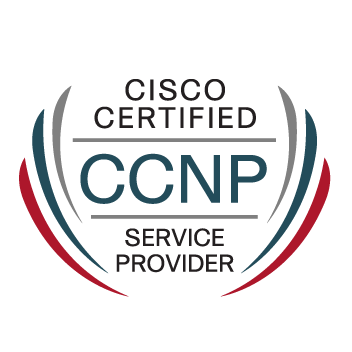- Cisco Community
- Technology and Support
- Service Providers
- MPLS
- MPLS TE Forwarding Adjacency with OSPF Database Issue
- Subscribe to RSS Feed
- Mark Topic as New
- Mark Topic as Read
- Float this Topic for Current User
- Bookmark
- Subscribe
- Mute
- Printer Friendly Page
MPLS TE Forwarding Adjacency with OSPF Database Issue
- Mark as New
- Bookmark
- Subscribe
- Mute
- Subscribe to RSS Feed
- Permalink
- Report Inappropriate Content
11-03-2020 11:21 PM - edited 11-03-2020 11:27 PM
Hello,
I'm having a simple topology as {R1 - R2 - R3} - IOS Routers
Scenario 1 with autoroute announce (Successful):
The TE tunnels between R1 and R3 are configured with autoroute announce, the TE tunnels are up and installed in the routing table (on both routers R1 and R3)
Scenario 2 with forwarding adjacency (Problem):
The TE tunnels between R1 and R3 are configured with forwarding-adjacency, the TE tunnels are up but not installed in the routing table (on both routers R1 and R3)
=================================================================================================
Scenario 1 configuration (Successful):
R1
!
interface Tunnel0
ip unnumbered Loopback0
tunnel mode mpls traffic-eng
tunnel destination 3.3.3.3
tunnel mpls traffic-eng autoroute announce
tunnel mpls traffic-eng path-option 1 dynamic
no routing dynamic
!
R3:
!
interface Tunnel0
ip unnumbered Loopback0
tunnel mode mpls traffic-eng
tunnel destination 1.1.1.1
tunnel mpls traffic-eng autoroute announce
tunnel mpls traffic-eng path-option 1 dynamic
no routing dynamic
!
Scenario 2 configuration (Problem):
R1:
!
interface Tunnel0
ip unnumbered Loopback0
tunnel mode mpls traffic-eng
tunnel destination 3.3.3.3
tunnel mpls traffic-eng forwarding-adjacency
tunnel mpls traffic-eng path-option 1 dynamic
no routing dynamic
!
R3:
!
interface Tunnel0
ip unnumbered Loopback0
tunnel mode mpls traffic-eng
tunnel destination 1.1.1.1
tunnel mpls traffic-eng forwarding-adjacency
tunnel mpls traffic-eng path-option 1 dynamic
no routing dynamic
!
Scenario 2 troubleshooting (Problem):
Considering that the TE tunnels are bidirectional as stated in the related configuration guides; both routers ospf database router LSAs do not have an entry for the newly created link, as it should appear in the database router as "Link connected to: another Router (point-to-point)"
After checking the TE tunnels, i found that the OSPF for some reason is not aware of the Tunnels, debugs are not showing any LSA generation once the tunnel TEs are signaled and established by RSVP.
R1#show mpls traffic-eng forwarding-adjacency
destination 3.3.3.3, area ospf 1 area 0, has 1 tunnels
Tunnel0 (load balancing metric 0, nexthop 3.3.3.3)
(flags: Forward-Adjacency, holdtime 0)
R1#show ip ospf database router self-originate
OSPF Router with ID (1.1.1.1) (Process ID 1)
Router Link States (Area 0)
LS age: 982
Options: (No TOS-capability, DC)
LS Type: Router Links
Link State ID: 1.1.1.1
Advertising Router: 1.1.1.1
LS Seq Number: 80000039
Checksum: 0xFC3B
Length: 72
Number of Links: 4
Link connected to: a Stub Network
(Link ID) Network/subnet number: 1.1.1.1
(Link Data) Network Mask: 255.255.255.255
Number of MTID metrics: 0
TOS 0 Metrics: 1
Link connected to: a Transit Network
(Link ID) Designated Router address: 10.1.12.1
(Link Data) Router Interface address: 10.1.12.1
Number of MTID metrics: 0
TOS 0 Metrics: 1
Link connected to: a Transit Network
(Link ID) Designated Router address: 10.1.11.11
(Link Data) Router Interface address: 10.1.11.1
Number of MTID metrics: 0
TOS 0 Metrics: 1
Link connected to: a Transit Network
(Link ID) Designated Router address: 10.1.2.2
(Link Data) Router Interface address: 10.1.2.1
Number of MTID metrics: 0
TOS 0 Metrics: 1
Scenario 2 (Problem) fix:
After configuring router ospf with "mpls traffic-eng interface Tunnel0 area 0" and the tunnel interface 0 with "ip ospf 1 area 0" and adjusting the core interfaces costs, the tunnel0 is installed in the routing table.
Does this mean that FA was not supported with OSPF with the IOS image? Though, when the forwarding-adjacency is removed from the TE tunnel configuration, the route towards the tunnels is not valid anymore and OSPF generate a router LSA without the TE tunnel.
N.B.: The above scenario was not problematic using IOS-XR routers and didn't required to strictly configure the OSPF with the TE tunnels
- Labels:
-
MPLS
- Mark as New
- Bookmark
- Subscribe
- Mute
- Subscribe to RSS Feed
- Permalink
- Report Inappropriate Content
12-08-2020 01:40 AM
Hi,
this is how forwarding adjacency works - by including MPLS-TE tunnel in SPF calculations so that it can announced via IGP.
Abzal
Discover and save your favorite ideas. Come back to expert answers, step-by-step guides, recent topics, and more.
New here? Get started with these tips. How to use Community New member guide

